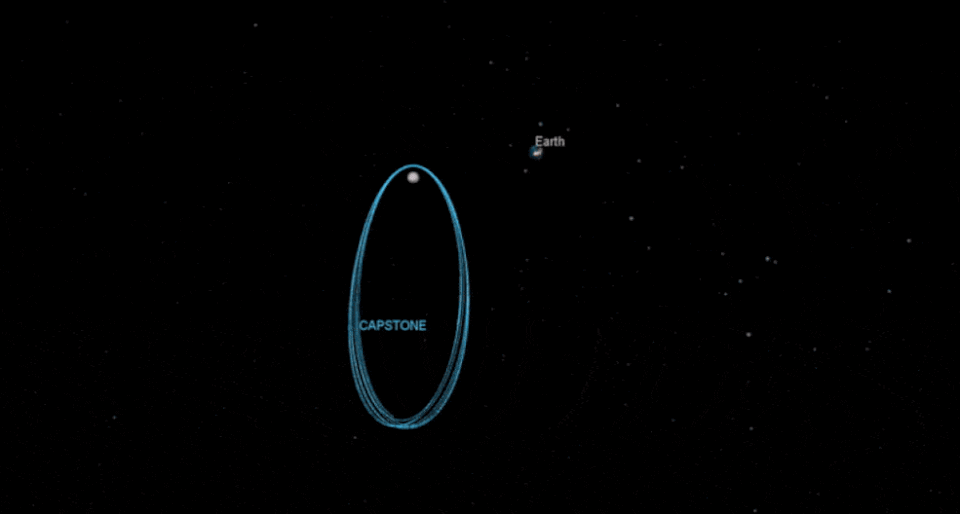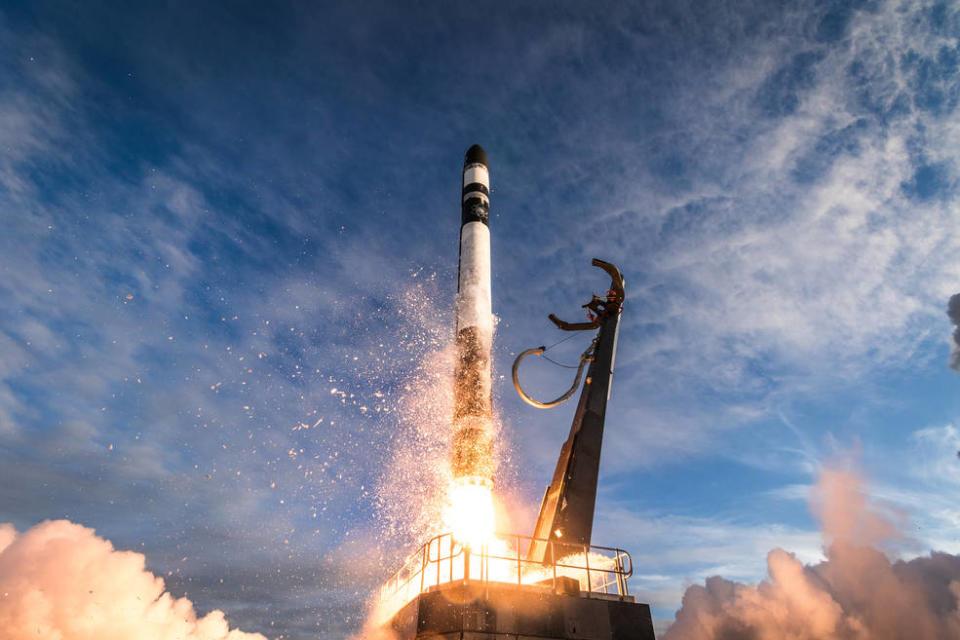NASA’s Next Mission Launches the Commercial Era of the Moon

Sometimes the best things in life come in small packages. Look no further than NASA’s upcoming mission to send a microwave-sized satellite to the moon.
The agency is set to launch the Cislunar Autonomous Positioning System Technology Operations and Navigation Experiment (CAPSTONE), a 55-pound lunar satellite that could fit comfortably on a bookshelf. What it lacks in size, it’ll more than make up for in its mission to chart out a unique orbit around the moon that’ll one day be home to a lunar outpost for the Artemis program.
The launch is scheduled for June 27 at 5:50 a.m. Eastern Time. Ferrying CAPSTONE up to the cosmos will be Rocket Lab, a New Zealand-based private space company that made headlines last month when it managed to catch a falling rocket booster using a helicopter (kind of). The company will be using the same type of small rocket, dubbed Electron, to send the satellite up to low-earth orbit, though it won’t be attempting another rocket booster ‘copter catch.
“This mission is incredibly complex and it’s the most performance that we’ve ever tried to get out of the Electron rocket,” Peter Beck, the CEO and founder of Rocket Lab, told The Daily Beast. He later added that “this is going to be a lot different” from the helicopter catch last month.
The CAPSTONE mission will play host to a number of firsts. For one, CAPSTONE will be the first spacecraft to embark on a unique orbit known as a near rectilinear halo orbit (NRHO), which will take it on an elongated oval path around the moon—as close as 1,000 miles to one of the lunar poles and as far away as 43,500 miles from the other pole. The spacecraft will also be within full view of Earth the entire time, allowing it to communicate with its controllers on terra firma. This is the intended orbit of the future lunar Gateway outpost, a planned space station that will provide support for crewed lunar explorations and more.
Exploring this orbit is “the crux of this mission,” Beck said. “The satellite will enable us to test that orbit and understand, from a communication and stability standpoint, how it works. That enables future programs to put things like space stations and orbiting node points there to go to the moon and also to go to Mars.”
Oddly enough, NASA already has plenty of data and modeling information that this orbit will work just fine for a future outpost. However, the agency still believes that CAPSTONE is important to demonstrate NRHO’s viability for conducting spacecraft-to-spacecraft communication relayed by a NASA satellite already in orbit around the moon. This will lay the groundwork for Gateway’s future communications with lunar spacecraft.

Highly elliptical, a near rectilinear halo orbit around the Moon takes advantage of a precise balance point in the gravities of Earth and the Moon and creates a stability that is ideal for long-term missions like Gateway.
In all, CAPSTONE is effectively the de facto first mission of the Artemis project, the agency’s much anticipated but oft delayed successor to Apollo, tasked with the goal to to return humans back to the moon and set a foundation for establishing a lunar colony. Even Chris Baker, a senior engineer at NASA’s Space Technology Mission Directorate, admitted to Ars Technica in an interview that there’s not too much to learn from the mission that modeling hasn’t already predicted. However, it’s still important to be able to validate theories and finally get the beleaguered project literally off the ground.
The mission will also mark the first time that a commercially-owned rocket will be making a trip to the moon. Moreover, CAPSTONE itself was developed and will be controlled by Advanced Space, a U.S.-based private space venture. It’s yet another signal that the future of NASA—and space exploration as we know it—will be laid squarely on the shoulders of private companies, which has both offered a lot of potential for innovation and efficiency, and also the risk of very expensive failures.
“I think it’s a real credit to NASA for focusing on the things that they’re really good at and allowing industry to focus on the things that they’re really good at,” Beck said. “We’re very excited. It’s a hugely complex mission, hugely challenging, and fairly high-risk. But, if it all works, it’ll be a big payoff.”

Rocket Lab's Electron rocket lifts off from Launch Complex 1 for the NASA ELaNa19 mission.
So it’s essentially an all-private affair. With the agency cutting big checks, these companies are now given a lot of leeway in what they can do and how they do it, without the traditional oversight and red tape that you would expect from a government project. Sure, CAPSTONE is going to be laying the foundation for future NASA projects. But this is only the beginning, opening the veritable floodgates for the inevitable privatization of lunar missions and, potentially, the moon itself.
No, that doesn’t necessarily mean that the moon will be bought and sold (though even that might be on the table). However, it does mean we can expect an increase in the power and influence private corporations will have on space exploration. One day, they’ll be able to determine mission parameters, select who gets to work on what, and potentially lay the groundwork for private missions to the moon and beyond. If we ever get to the point where people are taking vacations to visit the site of the Apollo 11 mission, those lunar tourists will have Monday’s launch to thank for it.
Got a tip? Send it to The Daily Beast here
Get the Daily Beast's biggest scoops and scandals delivered right to your inbox. Sign up now.
Stay informed and gain unlimited access to the Daily Beast's unmatched reporting. Subscribe now.

 Yahoo Movies
Yahoo Movies 
